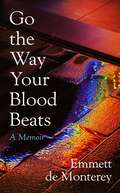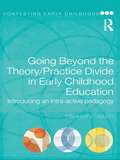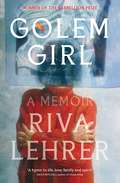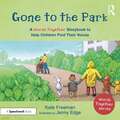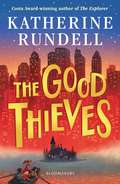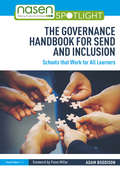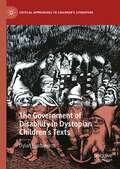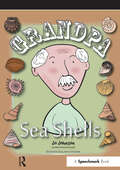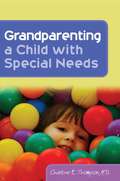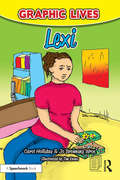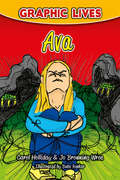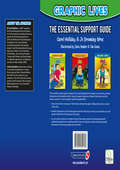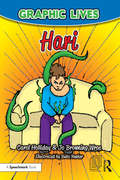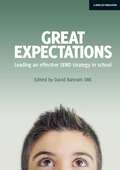- Table View
- List View
Go the Way Your Blood Beats
by Emmett de MontereyAN EXTRAORDINARILY MOVING AND ORIGINAL MEMOIR OF GROWING UP GAY AND DISABLED IN 1980S LONDONWhen Emmett de Monterey is eighteen months old, a doctor diagnoses him with cerebral palsy. Words too heavy for his twenty-five-year-old artist parents and their happy, smiling baby.Growing up in south-east London in the 1980s, Emmett is spat at on the street and prayed over at church. At his mainstream school, teachers refuse to schedule his classes on the ground floor, and he loses a stone from the effort of getting up the stairs. At his sixth form college for disabled students, he's told he will be expelled if the rumours are true, if he's gay.And then Emmett is chosen for a first-of-its-kind surgery in America which he hopes will 'cure' him, enable him to walk unaided. He hopes for a miracle: to walk, to dance, to be able to leave the house when it rains. To have a body that's everyday beautiful, to hold hands in the street. To not be gay, which feels like another word for loneliness. But the 'miracle' doesn't occur, and Emmett must reckon with a world which views disabled people as invisible, unworthy of desire. He must fight to be seen.A frank and intimate memoir written with an incredible clear-eyed intensity - Claire Fuller
God's Faithfulness in Trials and Testings
by Sandy EdmonsonThis short booklet is filled with encouraging insights, drawn from Scripture. The author writes with compassion, and explains Bible passages in a way that is clear and easy to understand. The author of this book donated a digital copy to Bookshare.org. Join us in thanking Crusader Books for providing its accessible digital book to this community.
Going Beyond the Theory/Practice Divide in Early Childhood Education: Introducing an Intra-Active Pedagogy (Contesting Early Childhood)
by Hillevi Lenz TaguchiGoing Beyond the Theory/Practice Divide in Early Childhood Education focuses on the use of pedagogical documentation as a tool for learning and transformation. Based on innovative research, the author presents new approaches to learning in early childhood education, shifting attention to the force and impact which material objects and artefacts can have in learning. Drawing upon the theories of feminist Karen Barad and philosophers Gille Deleuze and Félix Guattari, Hillevi Lenz Taguchi discusses examples of how pens, paper, clay and construction materials can be understood as active and performative agents, challenging binary divides such as theory/practice, discourse/matter and mind/body in teaching and learning. Numerous examples from practice are explored to introduce an intra-active pedagogy. 'Methodological' strategies for learning with children in preschools, and in teacher education, are brought to the fore. For example: the neighbourhood around the preschool and children's homes is explored, using drawing and construction-work on the floor; mathematics is investigated in teacher education, using the body, dance and music to investigate mathematical relationships and problems; taken-for-granted forms of academic writing are challenged by different forms of praxis- and experience-based writings that transgress the theory/practice divide; children, students and teacher educators use pedagogical documentation to understand their own learning, and to critique dominant habits of thinking and doing. Challenging the dominant understanding of ‘inclusion’ in educational contexts, and making ‘difference’ actively visible and positive, this book is rooted in the experiences, practices and words of teachers, teacher educators and student teachers. It will appeal to all those involved in early childhood education and also to those interested in challenging educational thinking and practices.
Going Beyond the Theory/Practice Divide in Early Childhood Education: Introducing an Intra-Active Pedagogy (Contesting Early Childhood)
by Hillevi Lenz TaguchiGoing Beyond the Theory/Practice Divide in Early Childhood Education focuses on the use of pedagogical documentation as a tool for learning and transformation. Based on innovative research, the author presents new approaches to learning in early childhood education, shifting attention to the force and impact which material objects and artefacts can have in learning. Drawing upon the theories of feminist Karen Barad and philosophers Gille Deleuze and Félix Guattari, Hillevi Lenz Taguchi discusses examples of how pens, paper, clay and construction materials can be understood as active and performative agents, challenging binary divides such as theory/practice, discourse/matter and mind/body in teaching and learning. Numerous examples from practice are explored to introduce an intra-active pedagogy. 'Methodological' strategies for learning with children in preschools, and in teacher education, are brought to the fore. For example: the neighbourhood around the preschool and children's homes is explored, using drawing and construction-work on the floor; mathematics is investigated in teacher education, using the body, dance and music to investigate mathematical relationships and problems; taken-for-granted forms of academic writing are challenged by different forms of praxis- and experience-based writings that transgress the theory/practice divide; children, students and teacher educators use pedagogical documentation to understand their own learning, and to critique dominant habits of thinking and doing. Challenging the dominant understanding of ‘inclusion’ in educational contexts, and making ‘difference’ actively visible and positive, this book is rooted in the experiences, practices and words of teachers, teacher educators and student teachers. It will appeal to all those involved in early childhood education and also to those interested in challenging educational thinking and practices.
Going Places Transition Scheme: Supporting Children with Additional Needs into Secondary School
by Carolyn Gelenter Nadine PrescottDesigned to support children with additional needs into their first year of secondary school in a safe and confident way, this resource provides all that is needed for schools to achieve a successful transition for all their children. The resource will give the students an opportunity to: become familiar with the layout of their new school; feel confident and safe about attending secondary school; become familiar with other students who will be attending their new school; and develop coping strategies to support their transition. Sessions include: Eating lunch, Secondary school lessons, Keeping safe and home-school links. Templates for timetables, games, charts, certificates and other resources are provided on the accompanying CD.
Golem Girl: A Memoir
by Riva Lehrer'A hymn to life, love, family, and spirit' DAVID MITCHELL, author of Cloud AtlasThe vividly told, gloriously illustrated memoir of an artist born with disabilities who searches for freedom and connection in a society afraid of strange bodies.In 1958, amongst the children born with spina bifida is Riva Lehrer. At the time, most such children are not expected to survive. Her parents and doctors are determined to 'fix' her, sending the message over and over again that she is broken. That she will never have a job, a romantic relationship, or an independent life. Enduring countless medical interventions, Riva tries her best to be a good girl and a good patient in the quest to be cured.Everything changes when, as an adult, Riva is invited to join a group of artists, writers, and performers who are building Disability Culture. Their work is daring, edgy, funny, and dark-it rejects tropes that define disabled people as pathetic, frightening, or worthless. They insist that disability is an opportunity for creativity and resistance. Emboldened, Riva asks if she can paint their portraits-inventing an intimate and collaborative process that will transform the way she sees herself, others, and the world. Each portrait story begins to transform the myths she's been told her whole life about her body, her sexuality, and other measures of normal.Written with the vivid, cinematic prose of a visual artist, and the love and playfulness that defines all of Riva's work, Golem Girl is an extraordinary story of tenacity and creativity. With the author's magnificent portraits featured throughout, this memoir invites us to stretch ourselves toward a world where bodies flow between all possible forms of what it is to be human.'Riva Lehrer is a great artist and a great storyteller. This is a brilliant book, full of strangeness, beauty, and wonder' AUDREY NIFFENEGGER
Gone to the Park: A ‘Words Together’ Storybook to Help Children Find Their Voices (Words Together)
by Kate FreemanGone to the Park, part of the ‘Words Together’ series, has been created to support children to understand and use two-word sentences. Using the pivot word ‘gone’, the simple story and repetitious structure provide an opportunity for the child to hear and experience the sentence structure in new ways. Bright and colourful illustrations provide rich opportunities for conversation and engagement. This storybook is an exciting resource for early years practitioners, parents, and those working with children at an early stage of speech and language development.
The Good Thieves
by Katherine RundellGo on an adventure with Katherine Rundell ... FOYLES CHILDREN'S BOOK OF THE YEAR 2019From the winner of the Costa Children's Book Award'An amazing adventure story, told with sparkling style and sleight of hand' JACQUELINE WILSON'Read everything she writes' DAILY MAILFresh off the boat from England, Vita Marlowe has a job to do. Her beloved grandfather Jack has been cheated out of his home and possessions by a notorious conman with Mafia connections. Seeing Jack's spirit is broken, Vita is desperate to make him happy again, so she devises a plan to outwit his enemies and recover his home. She finds a young pickpocket, working the streets of the city. And, nearby, two boys with highly unusual skills and secrets of their own are about to be pulled into her lawless, death-defying plan.Katherine Rundell's fifth novel is a heist as never seen before - the story of a group of children who will do anything to right a wrong.
The Good Thieves: An Introduction To New Media (Berg New Media Ser.)
by Katherine RundellGo on an adventure with Katherine Rundell ..._______________FOYLES CHILDREN'S BOOK OF THE YEAR 2019From the winner of the Costa Children's Book Award_______________'An amazing adventure story, told with sparkling style and sleight of hand' - Jacqueline Wilson'Read everything she writes' - Daily Mail_______________Fresh off the boat from England, Vita Marlowe has a job to do. Her beloved grandfather Jack has been cheated out of his home and possessions by a notorious conman with Mafia connections. Seeing Jack's spirit is broken, Vita is desperate to make him happy again, so she devises a plan to outwit his enemies and recover his home.She finds a young pickpocket, working the streets of the city. And, nearby, two boys with highly unusual skills and secrets of their own are about to be pulled into her lawless, death-defying plan.Katherine Rundell's fifth novel is a heist as never seen before - the story of a group of children who will do anything to right a wrong.
The Governance Handbook for SEND and Inclusion: Schools that Work for All Learners (nasen spotlight)
by Adam BoddisonThe Governance Handbook for SEND and Inclusion supports governors and trustees in developing effective strategic practice to ensure an inclusive culture in their schools. Building on the six principles of effective governance, it provides useful tips on achieving the right balance of support and challenge so that schools are enabled to meet the needs of learners with SEND (Special Educational Needs and/or Disabilities). Relevant for all governors and trustees across primary and secondary schools, multi-academy trusts and specialist settings, the book focuses on the role and expectations of governance in relation to SEND and inclusion. It includes: An introduction to SEND, inclusion and the six key features of effective governance Practical advice and guidance for SEND Governors and trustees on how to strategically monitor and review SEND provision A discussion of how the relationship between SENCOs, SEND Governors and Headteachers works in practice Advice on developing an inclusive culture in your school Sources of ongoing support and resources from professional organisations and websites. This book will be beneficial to all education professionals working at a strategic level, including governors and trustees, school leaders and SENCOs. It recognises the central role that governors and trustees play in setting the inclusive ethos of a school and suggests ways to ensure that strategic practice is as effective as possible.
The Governance Handbook for SEND and Inclusion: Schools that Work for All Learners (nasen spotlight)
by Adam BoddisonThe Governance Handbook for SEND and Inclusion supports governors and trustees in developing effective strategic practice to ensure an inclusive culture in their schools. Building on the six principles of effective governance, it provides useful tips on achieving the right balance of support and challenge so that schools are enabled to meet the needs of learners with SEND (Special Educational Needs and/or Disabilities). Relevant for all governors and trustees across primary and secondary schools, multi-academy trusts and specialist settings, the book focuses on the role and expectations of governance in relation to SEND and inclusion. It includes: An introduction to SEND, inclusion and the six key features of effective governance Practical advice and guidance for SEND Governors and trustees on how to strategically monitor and review SEND provision A discussion of how the relationship between SENCOs, SEND Governors and Headteachers works in practice Advice on developing an inclusive culture in your school Sources of ongoing support and resources from professional organisations and websites. This book will be beneficial to all education professionals working at a strategic level, including governors and trustees, school leaders and SENCOs. It recognises the central role that governors and trustees play in setting the inclusive ethos of a school and suggests ways to ensure that strategic practice is as effective as possible.
The Government of Disability in Dystopian Children’s Texts (Critical Approaches to Children's Literature)
by Dylan HoldsworthThis book takes up the task of mapping discursive shifts in the representation of disability in dystopian youth texts across four historical periods where major social, cultural and political shifts were occurring in the lives of many disabled people. By focusing on dystopian texts, which the author argues act as sites for challenging or reinforcing dominant belief systems and ways of being, this study explores the potential of literature, film and television to act as a catalyst of change in the representation of disability. In addition, this work discusses the texts and technologies that continue to perpetuate questionable and often competing discourses on the subject.
Grandpa Seashells
by Jo Johnson'Grandpa Sea Shells' tells the story of three young children who spend a day with their grandparents after their grandfather has been diagnosed with dementia. The book is intended to support conversation at the time of first changes in a relative, a diagnosis of dementia and mild to moderate progression. Families and clinicians have told us this is the time period when they need material to support their explanations to children. Whilst the book could be used to start a conversation about any form of dementia, most of the key symptoms described in this story reflect the typical features associated with the Alzheimer's type, as this continues to be the most common. This book has been designed so that children of between four and ten can read it independently. Ideally it should be used with an adult to facilitate discussion about all aspects of family life and to enhance general emotional wellbeing. The book deliberately makes dementia one of many things going on for this family and highlights things that families can still enjoy together. We have included ideas for positive activities at the end of the book as well as puzzle and description pages that children can enjoy doing with a family member, teacher or clinician.
Grandpa Seashells
by Jo Johnson'Grandpa Sea Shells' tells the story of three young children who spend a day with their grandparents after their grandfather has been diagnosed with dementia. The book is intended to support conversation at the time of first changes in a relative, a diagnosis of dementia and mild to moderate progression. Families and clinicians have told us this is the time period when they need material to support their explanations to children. Whilst the book could be used to start a conversation about any form of dementia, most of the key symptoms described in this story reflect the typical features associated with the Alzheimer's type, as this continues to be the most common. This book has been designed so that children of between four and ten can read it independently. Ideally it should be used with an adult to facilitate discussion about all aspects of family life and to enhance general emotional wellbeing. The book deliberately makes dementia one of many things going on for this family and highlights things that families can still enjoy together. We have included ideas for positive activities at the end of the book as well as puzzle and description pages that children can enjoy doing with a family member, teacher or clinician.
Grandparenting a Child with Special Needs
by Charlotte ThompsonWhen a new baby is born into a family, grandparents are excited about having a baby to enjoy and love. If the child is born with a disability, it can be difficult to know how to react and how best to help the child and the family as a whole. This book provides guidance on how to grandparent a child with special needs and give every grandchild the love and care they deserve and parents the added support they need. From coming to terms with a diagnosis, to helping with the transition from adolescence to adulthood, the book gives clear advice on grandparenting a child with special needs throughout their life. The author covers the medical, emotional and practical aspects of being a grandparent and explores important issues such as researching resources for specialized care, accessing financial and legal resources and, just as importantly, how to have fun and spend quality time with a grandchild with a disability. The book also addresses how to handle the diagnosis of a serious accident or progressive illness. Grandparenting a Child with Special Needs is a unique guide for grandparents keen to make a difference to the lives of their children and their grandchildren.
Grandparenting a Child with Special Needs (PDF)
by Charlotte ThompsonWhen a new baby is born into a family, grandparents are excited about having a baby to enjoy and love. If the child is born with a disability, it can be difficult to know how to react and how best to help the child and the family as a whole. This book provides guidance on how to grandparent a child with special needs and give every grandchild the love and care they deserve and parents the added support they need. From coming to terms with a diagnosis, to helping with the transition from adolescence to adulthood, the book gives clear advice on grandparenting a child with special needs throughout their life. The author covers the medical, emotional and practical aspects of being a grandparent and explores important issues such as researching resources for specialized care, accessing financial and legal resources and, just as importantly, how to have fun and spend quality time with a grandchild with a disability. The book also addresses how to handle the diagnosis of a serious accident or progressive illness. Grandparenting a Child with Special Needs is a unique guide for grandparents keen to make a difference to the lives of their children and their grandchildren.
Graphic Lives: A Graphic Novel for Young Adults Dealing with Self-Harm (Graphic Lives)
by Jo Browning Wroe Carol Holliday Tim EvansGraphic Lives is a series of highly engaging graphic novels for young people who may need counselling and psychotherapy. Each book introduces the difficulties faced by a teenage character and follows them as they travel on their therapeutic journey with a skilled and creative therapist. The key aims of these books are: to demystify counselling and psychotherapy so that it is more appealing and accessible to young people; to destigmatise emotional and mental health problems so that young people are better able to accept help; to encourage young people to embark upon their own healing journeys, equipped with the sense that there is a way forward. Following the traumatic break-up of her parents' marriage, Lexi feels excluded and unloved. Unable to cope with her emotions, she self-harms, cutting herself with a scalpel. When her boyfriend splits up with her the self-harm intensifies until Lexi's sister persuades her to see Steph, the school counsellor. Together they explore some of the experiences that have shaped the way Lexi responds to negative emotions, and though the challenges she faces remain the same, as the therapy continues she learns how to experience those emotions without self-harming.
Graphic Lives: A Graphic Novel for Young Adults Dealing with an Eating Disorder (Graphic Lives)
by Jo Browning Wroe Carol Holliday Angeleen RenkerGraphic Lives is a series of highly engaging graphic novels for young people who may need counselling and psychotherapy. Each book introduces the difficulties faced by a teenage character and follows them as they travel on their therapeutic journey with a skilled and creative therapist. The key aims of these books are: to demystify counselling and psychotherapy so that it is more appealing and accessible to young people; to destigmatise emotional and mental health problems so that young people are better able to accept help; to encourage young people to embark upon their own healing journeys, equipped with the sense that there is a way forward. Sixteen year-olds Ava and Jade are obsessed with food, calories, and staying thin. Pleased with the many compliments they receive they push themselves into anorexia. Ava's mother is alarmed by her daughter's weight loss and forces her into therapy with the school counsellor, Steph. However after only two sessions Steph touches a raw nerve, Ava storms out and refuses to continue. Only when Jade is admitted to hospital does Ava return to therapy, where she begins to understand the causes of her anorexic tendencies.
Graphic Lives: A Graphic Novel for Young Adults Dealing with an Eating Disorder (Graphic Lives)
by Jo Browning Wroe Carol Holliday Angeleen RenkerGraphic Lives is a series of highly engaging graphic novels for young people who may need counselling and psychotherapy. Each book introduces the difficulties faced by a teenage character and follows them as they travel on their therapeutic journey with a skilled and creative therapist. The key aims of these books are: to demystify counselling and psychotherapy so that it is more appealing and accessible to young people; to destigmatise emotional and mental health problems so that young people are better able to accept help; to encourage young people to embark upon their own healing journeys, equipped with the sense that there is a way forward. Sixteen year-olds Ava and Jade are obsessed with food, calories, and staying thin. Pleased with the many compliments they receive they push themselves into anorexia. Ava's mother is alarmed by her daughter's weight loss and forces her into therapy with the school counsellor, Steph. However after only two sessions Steph touches a raw nerve, Ava storms out and refuses to continue. Only when Jade is admitted to hospital does Ava return to therapy, where she begins to understand the causes of her anorexic tendencies.
Graphic Lives: Essential Support Guide (Graphic Lives)
by Carol Holliday Jo Browning WroeGraphic Lives is a series of highly engaging graphic novels for young people who may need counselling and psychotherapy. Each book introduces the difficulties faced by a teenage character and follows them as they travel on their therapeutic journey with a skilled and creative therapist. The key aims of these books are: to demystify counselling and psychotherapy so that it is more appealing and accessible to young people; to destigmatise emotional and mental health problems so that young people are better able to accept help; to encourage young people to embark upon their own healing journeys, equipped with the sense that there is a way forward. The essential support guide, designed to be used alongside the Graphic Lives novels, provides therapists and counsellors with a range of support resources, linked to the stories and the issues covered. For each graphic novel, this guide offers: clear and concise coverage of risk factors and warning signs relating to the issue covered in the story; detailed exploration of each therapeutic session in the story so that you can devise you own sessions that link to the therapy in the story; an up-to-date summary of research around the issue covered in the book along with professional guidance on working with that issue to help you achieve the best possible outcomes for the young people you work with.
Graphic Lives: Essential Support Guide (Graphic Lives)
by Carol Holliday Jo Browning WroeGraphic Lives is a series of highly engaging graphic novels for young people who may need counselling and psychotherapy. Each book introduces the difficulties faced by a teenage character and follows them as they travel on their therapeutic journey with a skilled and creative therapist. The key aims of these books are: to demystify counselling and psychotherapy so that it is more appealing and accessible to young people; to destigmatise emotional and mental health problems so that young people are better able to accept help; to encourage young people to embark upon their own healing journeys, equipped with the sense that there is a way forward. The essential support guide, designed to be used alongside the Graphic Lives novels, provides therapists and counsellors with a range of support resources, linked to the stories and the issues covered. For each graphic novel, this guide offers: clear and concise coverage of risk factors and warning signs relating to the issue covered in the story; detailed exploration of each therapeutic session in the story so that you can devise you own sessions that link to the therapy in the story; an up-to-date summary of research around the issue covered in the book along with professional guidance on working with that issue to help you achieve the best possible outcomes for the young people you work with.
Graphic Lives: A Graphic Novel for Young Adults Dealing with Anxiety (Graphic Lives)
by Carol Holliday Angeleen RenkerGraphic Lives is a series of highly engaging graphic novels for young people who may need counselling and psychotherapy. The key aims of these books are: to demystify counselling and psychotherapy so that it is more appealing and accessible to young people; to destigmatise emotional and mental health problems so that young people are better able to accept help; to encourage young people to embark upon their own healing journeys, equipped with the sense that there is a way forward. Hari - As fifteen year-old Hari approaches his mock-GCSEs, he begins to experience anxiety attacks aggravated by his fears of failure to meet his own and his family's expectations. When intermittent feigned illness escalates to the point where he runs out of an exam and hides in a cupboard, Hari agrees to see Steph, the school counsellor. Together they explore ways for Hari to manage his own anxiety and be less critical of himself.
Great Expectations: Leading An Effective Send Strategy In School
by David BartramA selection of essays from leading educationalists and school leaders with a track record of improving outcomes for children and young people with additional needs, highlighting the significant role that school leaders play in shaping effective practice in SEND. Based on the SEND Review Guide, a national self-evaluation framework part-funded by the DfE and authored by David Bartram and Vijita Patel, downloaded by over 3000 schools, the book is divided into eight sections: Leadership; Teaching and Learning; Working with Pupils and Parents; Identification and Assessment; Monitoring and Tracking; Efficient Use of Resources; Developing Provision; Improving OutcomesEach section includes 3-4 essays. The opening essays offer a broad national perspective on the focus area, authored by a leading educationalist. The following essays, authored by school leaders from a range of educational settings including secondary, primary and special schools, highlight practical examples of how they have improved outcomes for this group of pupils, often in particularly challenging contexts. There will be a strong focus on impact of the approach.
The Green-Eyed Goblin: What to do about jealousy - for all children including those on the Autism Spectrum (PDF)
by Haitham Al-Ghani Kay Al-GhaniDeep inside everyone, a little goblin lies sleeping. When it wakes up, its eyes turn green, its nose grows and it starts to breathe a smelly green mist. This is the story of the wakening of a Green-Eyed Goblin. When Theo sees his sister getting lots of attention for her birthday, his sleeping goblin wakes and he can't seem to stop himself from saying all the horrid things the nasty goblin's green mist is making him think. Will Theo learn how to send his Green-Eyed Goblin back to sleep in time for the party? This fun, illustrated storybook will help children aged 5-13 to understand and cope with jealousy and how it can sometimes make us feel not good enough. A helpful introduction for parents and carers explains jealousy in children, and a section at the back of the book provides strategies for overcoming it.
The Green Zone Conversation Book: Finding Common Ground in Conversation for Children on the Autism Spectrum (PDF)
by Joel ShaulIn conversation, children on the autism spectrum often struggle to select topics of interest to others. Many have strong, narrow interests and feel compelled to introduce these subjects when they talk. This book provides a simple visual model to help children experience more success in finding common ground in conversation. The "Green Zone" is a visual representation of finding common ground between one person (blue) and another person (yellow) to create a "green zone" that represents the pair's shared interests. The book, illustrated with hundreds of photographs representing the range of other people's interests, clearly explains what the "Green Zone" is and how to find it, and contains many photocopiable conversation practice activities and reinforcement worksheets based on this simple visual. Ideal for use in classroom settings or at home, this attractive, full colour book is suitable for children on the autism spectrum aged 7 and up.
